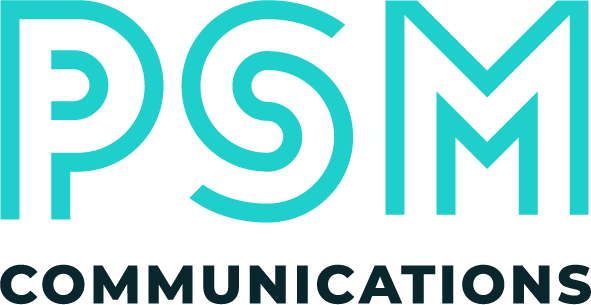An honest question… How many of you reading this blog send out, or have sent out in the last 12 months, mass emails to large volumes of your database in the hope something ‘sticks’?
What success did you get?
One or two percent click through? And yet, all the people on that mass list are different. People’s levels of experience will vary. The requirements of their role will vary. Their buying habits will vary.
A one-size-fits-all approach to marketing has long been criticised, quite rightly, for failing to address the quirks that make us unique, and although the concept of personalisation is nothing new, many marketers still fall into familiar pitfalls when thinking about segmentation.
One of the common mistakes we often see is the confusion between segmentation and demographics.
“How are you segmenting your target market?”
“We segment by job title, by location, by sector?”
Although demographics play a role in segmentation, they should be just part of the jigsaw. I’ll explain more later.
Another common mistake we see is a reliance on traditional segmentation that fails to take into account the major shifts in customer behaviour in today’s digital age. How much data do you have in your CRM and marketing automation platform? A huge amount. This data needs to play into segmentation.
When done well, segmentation will positively impact your customer experience – improve brand loyalty and provide excellent ROI.
When done well, segmentation will positively impact your customer experience – improve brand loyalty and provide excellent ROI. So, in this blog I thought it might be useful to dig a little deeper into the advantages of true segmentation and illustrate how it can benefit your firm.
The benefits of market segmentation
In the current Covid-19 environment we are in, all professional services firms, no matter what your size, need to be nimble, efficient and responsive to your client’s needs. Segmentation is your route to delivering this. Here’s the benefits:
Improved Customer Retention
An Accenture Strategy Study found that 52% of people switch brands during a one-year period, with 68% never going back. This might not have been a professional services B2B datapoint, but you get the point. In today’s challenging environment, customer retention has never been more important. Segmentation will help you craft and deliver an effective retention strategy, by grouping specific populations of your client base. For example, an accounting firm may wish to target those customers who always approach them in the weeks before the tax return deadline at that same key moment each year – anticipating the way they work and capitalising on the urgency of the deadline to retain their business. In an HR context if your buyer data shows certain groups of organisations buy development programmes in a certain time period, you can market accordingly.
Offers a Competitive Edge
Segmentation digs deep into the desires and requirements of your market. Being able to identify complex needs, beyond the primitive demographics that your competitors might use, will give your firm an edge over others.
Segmentation digs deep into the desires and requirements of your market. Being able to identify complex needs, beyond the primitive demographics that your competitors might use, will give your firm an edge over others.
Delivers a Better Customer Experience
The modern-day client demands a lot, which makes sense with so many companies vying for their attention. They want consistency across channels and personalised messaging that’s truly relevant to their needs. Segmentation allows you to deliver this.
Targeted Ads and Emails
Serving targeted ads and emails to different client segments will undoubtedly result in a higher conversion rate. Segmentation allows you to hone your message for different groups, according to their needs, knowledge of your firm, demographics and what stage of the buying journey they are at.
Provides Direction
Segmentation will contribute to a wider go to market strategy, as it helps identify new market segments that consist of your target customers. It offers a direction to your firm and provides you with the intelligence you need to successfully market to those new prospects.
There’s plenty more, but you get the point.
How to segment Your market
So how can you begin the process of segmenting your target buyers?
Demographics
Yes, I know I said that segmentation was so much more than demographics, it is, but demographics are a useful starting point. It is the most common way to group audiences, and it includes familiar factors such as location, job title, sector etc. This information can be easy to collect from your prospects, for example by using a simple email sign up form.
A few years ago, many of us may have stopped at this point, believing to have enough information to go ahead and target these prospects. But really, this information only positions us at the very start of a path, which could go in many different directions. Every customer will buy for different reasons. Segmentation needs to dig deeper to become really useful – have I said that enough now?!
Customer Journey
Every customer has a unique interaction with your firm. Some may have used your services for 20 years, some may have bounced from your homepage after 3 seconds – and many, many prospects will sit somewhere in between. These prospects and clients require different messaging.
Every customer has a unique interaction with your firm. Some may have used your services for 20 years, some may have bounced from your homepage after 3 seconds – and many, many prospects will sit somewhere in between. These prospects and clients require different messaging. The person who has only just heard your firm’s name may want to find out more about you – the long-term customer will be looking for something very different. It’s essential that you use the customer journey as another way to segment your audience, sending different messages to, for instance, those that have visited your site but not worked with you, to those that have not worked with you for a few years, to those that became a new client last week.
Behavioural
Drill down further into your prospects and you’ll access one of the most powerful strategies – behavioural segmentation. This allows you to target individuals in a timely manner, when and where they prefer. There are a number of variables to consider here, such as:
- How often do they work with you?
- What is the motivation behind their buying decisions?
- Does their point of engaging you relate to a specific moment in the year (such as the end of the financial year, or performance review time)?
If you can get under the skin of these behaviours you can gain incredible insight into your prospects behaviour. For a customer who engaged you at a certain time in the previous financial year, you can contact them again to remind them of the impact your work had last year, encouraging further conversations.
Each firm will need a different combination of these segmentation techniques, dependent on your customers and your services. Develop a strategy that works for you – always trying to dig as deeply as possible to really understand what is impacting your customers buying decisions.
Some final thoughts… the number of consultancies is growing. Covid-19 has seen more and more experienced consultant make the shift to independent work. The upshot is the market is becoming even more crowded. More people will be approaching your clients. So, staying relevant is more critical than ever. Delivering a strategy rooted in segmentation is one of the best ways you can protect and grow your consultancy in a crowded market – it delivers a personalised experience that speaks to their needs and will set you aside from other consultancies who are hell bent on still sending out this mass emails!

